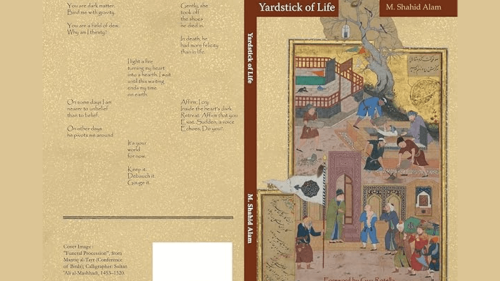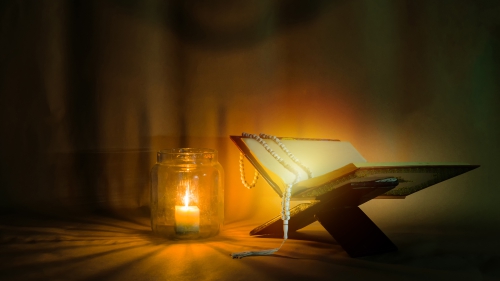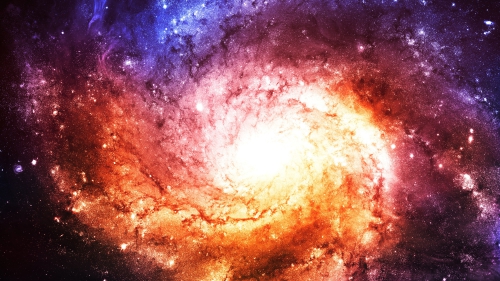Islam’s Prohibition of Drawing Images and Erecting Statues

Islam prohibits drawing images and erecting statues of humans. The matter pertains as much to fiqh (Islamic jurisprudence) as ‘aqidah (Islamic belief system). There are many authentic hadiths (traditions) of the Prophet (peace and blessings be upon him) that testify to this.
According to those hadiths, the image makers are cursed; they are called some of the most evil creation; they will be most severely punished on the Day of Judgment; they will be punished until they breathe life into their “creations”, but they will never be able to do that; and the angels do not enter houses in which there are statues (Sahih al-Bukhari and Sahih Muslim).
What are the reasons for this prohibition?
By and large, human images and statues are produced in the name of art, in its two main classical branches: painting and sculpture. They are meant to be appreciated for their beauty, meaning and emotional power, predicated on an artist’s imagination, resourcefulness, conceptual ideas and skills.
Authentic art is a process of discovering in life and nature their essence, which is meta-physical. It is furthermore ontological, dealing with the fundamental nature of being. That essence is then given a physical form most appropriate for it. The nearer the visible object is to the essence, the more beautiful it is.
Art, therefore, is the trickiest and most challenging thing, bordering on the impossible. It is an attempt to rationalize, in essence, the irrationalizable and represent the unrepresentable.
Needless to say that authentic art is not the imitation of created nature. “A photographic representation, which reproduces the object as it is, may be valuable for illustration or documentation, for the establishment of identity. As a work of art, it is worthless” (Isma’il al-Faruqi).
Man As a Masterpiece of Heavenly Artistry
Almighty Allah created man in the best of molds, a combination of the body (matter) and soul. The latter, which is a heavenly substance called by Allah in the Qur’an as “My Spirit” (Sad, 72), has been breathed into the former so as to give life to and sustain it.
Man is neither the body (jism) nor the soul (ruh) alone. The subtle mixture of the two constitutes a person, which is called nafs. However, in this dual configuration the body is to always be subservient to the soul. It is to be its instrument and carrier.
The welfare and interests of the soul are to prevail, for the ultimate truth and life realities are sublime and transcendent, rather than lowly and only physical. Without harnessing the capacities of the soul, the body and nafs (self or personality) will never get access to the profundity of existence.
Life signifies but the striking of a delicate balance between the body’s and the soul’s longings for their respective origins and goals. Allah says: “He has succeeded who purifies it (the soul or the self, nafs); and he has failed who corrupts it” (al-Shams, 9-10).
In addition, the creation of man denotes the pinnacle of Almighty Allah’s incomparable act of creation. Allah also created man (Adam) in His own image (Sahih Muslim). That means that man is bestowed with a great many attributes and qualities that Allah also has, such as life, knowledge, power of hearing, seeing, understanding, etc. But the two are completely different. Similarities are only in names. One belongs to the Creator and Master, and the other to the creation and servant. There can be no comparison of any kind between the two. Allah says: “There is nothing like unto Him (Allah)” (al-Shura, 11).
Man is also created as khalifah (Allah’s vicegerent, viceroy or deputy) on earth, to whom everything in the heavens and on the earth has been subjected. Allah greatly honored man and conferred on him special favors, over a great part of creation (al-Isra’, 70). Man is given all those godlike qualities and attributes solely in order to be able to actualize and live the concept and phenomenon of life according to the will and design of its Creator, and not according to his own fluctuating will, desires and interests.
Hence, so meaningful, consequential and complex is the universe of man – a convergence of his spiritual, intellectual, emotional and physical proportions - that no artistic idea and expression, nor any artist’s imagination, creativity, talent and skill, will do him justice. Every depiction of man will be insufficient and flawed, one way or another. It will be an unfair act of downgrading man’s importance and his honorable substance, mission and purpose. All failed endeavors will have no choice but to oscillate between one misguided artistic extremity and another.
Such an art will then become a form of distortion and falsehood. It will be misleading and dangerous.
Accordingly, man and his remarkable essence are undepictable and unrepresentable. They reside above the aptitudes of art.
Allah As the Only Creator
The only Creator who creates ex nihilo (from absolute nothingness), and the only Life-Giver, is Allah. Man can be dubbed as such only metaphorically.
In order to emphasize the importance and primacy of the matter, Allah describes Himself as the Almighty and Original Creator using different attributes and names. Chief among them are: al-Khaliq (the Creator of everything out of nothingness), al-Fatir (the Bringer into existence, giving every living thing its particular nature, objective and meaning), al-Badi’ (the Originator of everything without model or material and after no pre-existing similitude), al-Bari’ (the Maker, referring to the creative act of bringing about what Allah wills to create) and al-Musawwir (the Fashioner who gives each created thing its unique form).
If a person (artist) really wanted to depict or “create” the essence of a human being by means of either painting or sculpture, he will then have encroached upon the rights and authority that belong to Allah only. That is a blasphemous act.
Islam teaches that regardless of man’s relative abilities and flairs, and his restricted civilizational achievements and coups, there will never be an exchange of titles between him and Allah. Allah as the Creator, Master and Sustainer will forever remain so, and man as the mere creation, servant and indigent being will also forever remain so. Trying, or pretending, to upset this hierarchical balance denotes one of the most loathsome acts that man may perpetrate.
It is therefore held that one of the main reasons for prohibiting drawing images and erecting statues of humans is that such acts imply trying to match the creation of Allah. As a result, while being punished on the Day of Judgment, the persons guilty of such a wrongdoing will be asked, as a form of humiliation, to give life to that which they have created.
Life As a Canvas
The Prophet (peace and blessings be upon him) said that Allah is beautiful and loves beauty (Sahih Muslim). He also said that Allah does not look at people’s figures, appearances or wealth, but rather He looks at their hearts and deeds (Sahih Muslim).
This means that Islam promotes the prospects of artistic creativity and the enjoyment of beauty. It likewise exalts beauty and the beautiful, just as it abhors and suppresses ugliness.
However, Islam sees absolute beauty only in Allah: His Holy Self, Names, Attributes and Actions, the result of which are the universe and life. When the Prophet (peace and blessings be upon him) said that Allah “loves beauty”, he meant that Allah also wants man, His vicegerent, to create a legacy of beauty on earth. But terrestrial things, events and experiences are beautiful only when they are consistent with the highest standards and criteria of heavenly beauty.
Thus, man in his artistic undertakings – as part of his continuous cultural and civilizational drives on earth – is not to celebrate, nor glorify, himself, but Allah his Creator and Master. He is not to celebrate the types and upshots of relative beauty, but the power, source and signs of the Absolute Beauty. The latter course of action is more profound and rewarding. Above all, it is more authentic and sensible. It is about being real and true to one’s self.
Life in its totality will then be transformed into an infinite canvas. On it, Allah’s viceroy or deputy on earth will relentlessly paint his at once beautiful and praiseworthy personal and collective deeds, accomplishments, programs, manners, thoughts, ideas and experiences. Man will become both the generator of art and its integral part. His powerful and upright sense of beauty and excellence might as well become the source and raison d’etre of each and every other civilizational goodness of his.
The monotheistic canvas of life will exude an aura of actuality, realism and truth, rather than an aura of ambiguity, delusion and tension. Allah and his revealed signs (ayat) in the form of revelation, as well as creation, will be the Criterion.
Indeed, beauty is total and unconditional. It is incorrect to say that it lies in the eye of the beholder. Rather, it lies in the heart and mind of every righteous and so, beautiful, individual. The eyes are just windows.
Images and Statues As a Form of Veneration
Drawing images and erecting statues of humans can be so dangerous that such an approach under certain circumstances can morph, partly or completely, into an act of veneration, or even worship. It can be a portal leading to a degree of shirk (polytheism).
The earliest example of shirk on earth is said to have come to pass exactly owing to the veneration of certain individuals depicted in images. It all started with innocently drawing those individuals as part of a legacy preservation.
The trend of inseparability between images and statues, and forms of shirk, continued and grew in strength throughout the ages. For instance, struggles between aniconism and iconography in the orb of Christianity are well-known and well-documented, with the latter eventually becoming victorious. So much so that until approximately the 17th century the history of Western art was principally identical with the history of western ecclesiastical (Christian Church and its clergy) and religious art.
The Makkan society, where Prophet Muhammad’s prophet-hood mission commenced, was no exception. Yet, in it, so widespread was shirk that no aspect of life was conceivable without its traces. It was simply a culture and a way of life. The Ka’bah alone with its immediate vicinity is said to have contained in various forms up to 360 idols of many gods and goddesses belonging to various Arab tribes, towns and families.
It was due to that, surely, that Islam’s prohibition of idolatry and everything closely or remotely associated with it, was definite and unyielding. Aniconism was strictly upheld and enforced.
From all this, one can easily extract why Islam, in equal measure, prohibits drawing pictures and making statues of all other animate beings, such as animals and birds. Whereas there is nothing wrong with drawing and making inanimate or lifeless objects.
What About Today?
Many wonder if this prohibition is still valid today in the 21st century when the basic and primitive forms of shirk are long extinct.
The answer is an emphatic “yes”.
That is so because today, perhaps more than before, many people enjoy diverse and subtle polytheistic (shirk) tendencies. A sage has said that in the modern world there are more gods than people.
This can be explained along the lines of the verity that since lots of people today are skeptics, agnostics, and hedonists, they all fashion individual gods for themselves. Man cannot be godless and nonreligious, in the sense that he worships nothing. Man is created as a worshiping being.
Allah the Creator reveals that He has created man with an irresistible urge to submit to a power and authority, and to worship it. That power and authority should be the Creator and Master of the universe, but if man turns away, he then ends up concocting myriads of alternatives just to satisfy his inborn impulse to worship.
Some of those alternatives that man may worship instead of Allah are: power, greed, selfishness, wealth, fame, recognition, success, happiness, career, knowledge, science, technology, ego, lusts, ambitions, vision, ideas, illusions, human beings, prized objects, nation, race, state, family, offspring, this world, nature, natural phenomena, humankind, etc. Whatever is a person’s biggest obsession and he lives for it -- that is his deity (god).
Allah says to this effect: “Have you seen he who has taken as his god his own vain desires (lusts or caprices), and Allah has sent him astray due to knowledge and has set a seal upon his hearing and his heart and put over his vision a veil? So who will guide him after Allah? Then will you not be reminded?” (al-Jathiyah, 23).
Modern West-dominated global civilization is rooted in excessively materialistic and nonspiritual worldviews. It has an endless collection of its own gods and idols all of which revolve around man as a concept and most compelling reality, and his material interests, ambitions and overall hedonistic well-being. Science and technology connote the criterion of legitimacy, and their fraternity the mainstream orthodoxy. Temples and sanctuaries are shopping malls, business corporations, sports centers, cultural centers, art centers, entertainment centers, fashion centers, media establishments, museums, universities, colleges and other learning institutions.
In other words, extreme humanism, according to which man has extinguished any possibility of a supernatural or heavenly god, and in turn, went all out to deify himself and his potentials, became the backbone of modern civilization. This became reflected in all spheres, but especially in the sphere of art on account of its ontological character and its persuasive, narrative, expressionist and ritualistic dimensions.
The Role of Renaissance Humanism
It all started with the Renaissance (a period from the 14th century to the 17th century) as a precursor to modern-day civilization and a bridge between the Middle Ages and modern times.
One of the main characteristics of the Renaissance was its humanism, which resulted from the leading philosophical currents of the age. According to it, man is perceived as an independent earthly being no longer in need of the Heaven and God. Man does not need any objective metaphysical criteria as regards the prospect of sorting out the truth, epistemology and morality. His own reason, in total isolation from the revelation and the Heaven, will suffice. Human reason and other faculties of man are seen as superior and sovereign. As such, man was ready to conquer the earth and its physical laws, and so, realize his ultimate destiny. If God created the universe and man, He was no longer needed afterwards. Man was capable of running the show on earth and his life affairs on his own.
This Renaissance philosophy of humanism dealt a fatal blow to the notions of God and spirituality in the Christian Europe. They never recovered ever since. The matter reached the nadir when German Philosopher Friedrich Nietzsche declared in 1882 that God was dead (Gott ist tot).
No wonder that it was during the Renaissance that a culture of eliminating God and emancipating and venerating, yet worshiping, man through art gradually took off and never looked back. The greatest prophets, or saints, of this Renaissance art were Leonardo da Vinci (d. 1519), Michelangelo (d. 1564), Raphael (d. 1520) and Titian (d. 1576). So influential were some of them that their personalities and contributions at times are accorded yet a supernatural disposition.
At any rate, Renaissance art was most responsible for instituting what could be called a modern, sophisticated and subtle form of idolatry and hero worship in art, in substance deviating very little from its ancient and primitive counterparts. Through it, the Heaven and any significant spiritual worth of life have been repudiated, and man with all his physical qualities and abilities has been placed on a pedestal. Man has thus been declared the only Divinity on the earth, so to speak, and later following the rapid material progress of modern civilization, of the universe as well.
Accordingly, the Renaissance painting and sculpture masterpieces humanized their figures, following in the footsteps of their classical Greek and Roman equals which they tried to emulate. They were concerned with proportion, self-assurance, dignity and the idealized perfection of the human body.
They were secular and human, celebrating human individuality, poise, independence from the Heaven, passions, liberty, human form, spirit, hopes and fears. They often featured masculine and feminine nudities, honoring and promoting egotism, pride and lusts. That is why it is said that a typical Renaissance man was self-consciously confident, boastful, nonconformist, and lusty.
Every painting and sculpture hailed an aspect or more of this new human identity and uniqueness.
For example, Leonardo da Vinci’s “Virgin of the Rocks” demonstrates with exquisite grace and beauty the Virgin Mary as the loveliest of women and the Christ child as a chubby and playful baby boy. The characters are human, not divine.
Also, Leonardo’s famous “Mona Lisa” is the portrait of a real woman with her distinct personality and poise. Her captivating mysterious half smile may well indicate a measured welcoming and sanctioning of this new cultural ethos. Similarly, it could symbolize Mona Lisa’s acknowledgement and celebration of her own -- and everyone else’s – humanness.
And Leonardo’s “Last Supper”, which depicts the reactions of the twelve disciples to Christ’s words, “One of you shall betray me”, is essentially a study in human psychology. As if the focus shifted from Christ to the disciples, and by extension, to all humanity (Sullivan Richard, et al.).
Moreover, Raphael’s paintings contained religious subjects, but his Madonnas were feminine, gracious women and his Christ child pudgy and mischievous.
The same is true as far as Michelangelo’s sculptures are concerned. They glorified the human form, spirit, emotions and destiny. An example is his “Pieta” which represents the mother of Jesus holding the dead body of her son as she looks down piteously. “The helplessness and hopelessness of the huge, all-engulfing mother display human resignation at the finality of death – not the Christian hope of resurrection and eternal life” (Sullivan Richard, et al.).
Likewise, Michelangelo’s “Moses” portrays “the fierce and rugged strength of man, not God”, and his “David” epitomizes strength, youthful beauty and male nudity, conveying “not only the virile muscular power but also the agile grace of the male animal” (Sullivan Richard, et al.). It is apparent that man is deified thereby, and God defied and challenged.
It goes without saying that diverse forms and degrees of idolatry and hero worship are ever present in modern art, which is the face of modern secular and materialistic culture and civilization. Since Muslims are avid consumers, and even promoters, of this culture and civilization, they must be wary. By means of especially art, they can easily contaminate their monotheistic (tawhid or Allah’s Oneness) beliefs and practices. The spirit of Renaissance humanism, wrapped up cleverly in the cloak of modernism and its swelling liberalist and agnostic currents, is aggressively advocated in the name of art as an innocent, enlightening and universalist pursuit.
Hence, evolving and studying genuine Islamic art: its philosophy, history, ethics, form and content, will be crucial for Muslims. Such should feature prominently in Muslim educational systems, and generally in Muslim intellectual and cultural discourses. The idea of Islamization of art, whereby the realm of Islamic art would be cleansed of all accrued conceptual and applied shortcomings, should be keenly explored, too.
Indeed, Plato was right when he said in his “The Republic” that “the object of education is to teach us to love what is (authentically) beautiful”, because the good and the true are the beautiful.
Finally, the Prophet’s warnings against drawing images and erecting statues of humans are as relevant as ever. The core of the matter is perennially the same, even though its outer and incidental aspects and manifestations may differ due to the unavoidable impact of the factors of time, space, history and cultural tradition.
Topics: Creation And Evolution, Islamic Art And Architecture, Islamic Culture And Civilization, Islamic Jurisprudence (Fiqh), Soul (Nafs), The Renaissance
Views: 37967
Related Suggestions
















